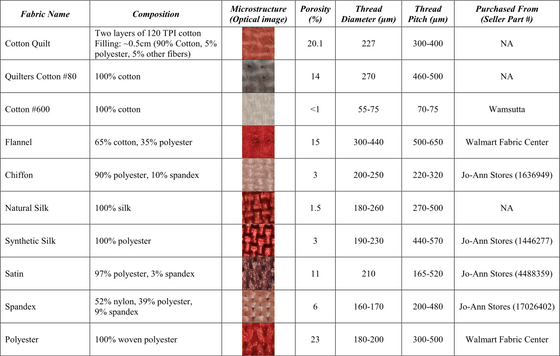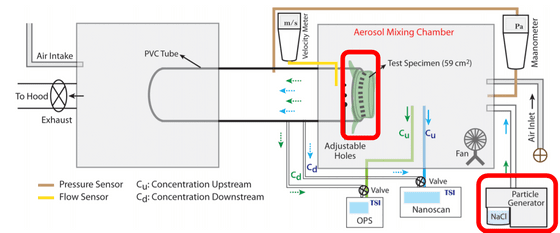How to make your own cloth mask that is comparable to the N95 mask with the materials you can get at home?

From the experimental results of filtering particles floating in the air with various fabrics, 'a method of making a high-performance fabric mask with commonly-distributed materials' was found.
Aerosol Filtration Efficiency of Common Fabrics Used in Respiratory Cloth Masks | ACS Nano
Scientists Have Figured Out The Best Materials to Use if You're Making a Mask at Home
https://www.sciencealert.com/if-you-re-making-your-own-mask-at-home-researchers-show-the-best-materials-to-use
Scientists Have Figured Out The Best Materials to Use if You're Making a Mask at Home
https://www.sciencealert.com/if-you-re-making-your-own-mask-at-home-researchers-show-the-best-materials-to-use
The Center for Disease Control and Prevention (CDC) uses T-shirts, bandanas, coffee filters, etc. for the general public, based on the idea that “medical masks and N95 masks should be given priority for medical institutions” We recommend making and wearing a self-made mask.
U.S. Center for Disease Control and Management reveals how to wear cloth masks and how to make a variety of them-GIGAZINE

Therefore, the Argonne National Laboratory and the research teams at the University of Chicago conducted experiments to verify the performance as a mask using ordinary materials that are in common use.
The materials used this time are '90% cotton fabric,' '100% cotton fabric,' '65% cotton, 35% polyester flannel, ' '90% polyester, 10% spandex chiffon, ' 'natural silk,' 'synthetic silk.' (Polyester) '97% polyester, 3% spandex satin ' '52% nylon, 39% polyester, 9% spandex fabric' '100% polyester fabric'.

And below is a schematic of the equipment used in the experiment. First, the aerosol generator in the lower right produces droplets of various sizes, made of a solution of sodium chloride (salt). Aerosol is sprayed onto a dough that is secured to a cylindrical tube that carries the same amount of air as a person breathing at rest. Then, by measuring the concentration of the aerosol before and after being sprayed, the performance of the fabric mask is evaluated.

As a result of this experiment, it was found that 'cotton,' 'natural silk,' and 'chiffon' can remove 50% of aerosols if they are well woven. Also, not only one piece of cloth, but also two pieces of cotton, 'cotton and silk', 'cotton and chiffon', 'cotton and flannel', etc. Aerosol was able to be removed at a rate of 80% when the size was less than 300 nanometers and 90% when the size was 300 nanometers or more.

Furthermore, when the research team tested it with a ' three-layer structure in which cotton is sandwiched between two chiffons ', aerosol particles were removed up to 99%, and it showed performance equivalent to N95 mask. According to the results, the research team speculates that 'combining cloths will cause a combined effect of physical filtration and static electricity, which will dramatically improve the performance of the mask.'
From these results, the research team said in the paper, 'In general, it is possible to realize effective protective effect against aerosol particles by combining readily available fibers that are used in general cloth masks. It turned out that there is. '
On the other hand, it is also known that if there is a gap in the mask, the effect will be halved. In order to reproduce the gap between the mask and face, the research team made a small hole corresponding to 1% of the total area in the fabric used for the experiment, and the ability to capture particles decreased by 60% or more. It is said that it has gone.
For this reason, the research team says, 'When manufacturing cloth masks in the future, it is necessary to consider the gap feeling while focusing on' fitness 'while paying attention to the efficient discharge of exhaled air.' I pointed out that it is important to make a mask so that there are no gaps.
Related Posts:
in Science, Posted by log1l_ks






